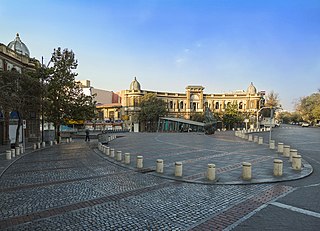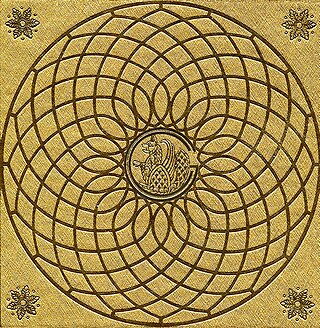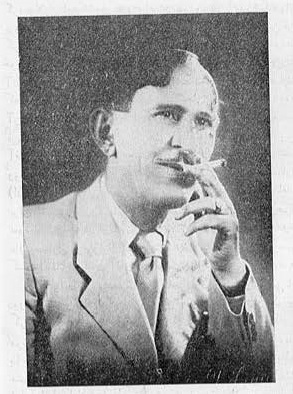
Tehran is the capital and largest city of Iran. In addition to serving as the capital of Tehran province, the city is the administrative center for Tehran County and its Central District. With a population of around 9.4 million in the city as of 2018, and 16.8 million in the metropolitan area, Tehran is the most populous city in Iran and Western Asia, the second-largest metropolitan area in the Middle East after Cairo, and the 24th most populous metropolitan area in the world. Greater Tehran includes several municipalities, including Andisheh, Eslamshahr, Pakdasht, Qods, and Shahriar.

Karaj is a city in the Central District of Karaj County, Alborz province, Iran, serving as capital of the province, the county, and the district. The earliest records of Karaj date back to the 30th century BC. The city was developed under the rule of the Safavid and Qajar Empire and is home to historical buildings and memorials from those eras. This city has a unique climate due to access to natural resources such as many trees, rivers, and green plains. After Tehran, Karaj is the largest immigrant-friendly city in Iran, so it has been nicknamed "Little Iran."

Arak is a city in the Central District of Arak County, Markazi province, Iran, serving as capital of the province, the county, and the district.

Valiasr Street, formerly known as the Pahlavi Street, is a tree-lined street in Tehran, dividing the metropolis into western and eastern parts which were built in 1922 to 1927 respectively, considering the end of asphalt plan it ended in 1933. It is considered one of Tehran's main thoroughfares and commercial centers. It is also the longest street in the Middle East, and was reported as one of the longest in the world by former BBC journalist Rageh Omaar during the television documentary Welcome to Tehran.

The Tehran Metro is a rapid transit system serving Tehran, the capital of Iran. It is the largest metro system in the Middle East. The system is owned and operated by Tehran Urban and Suburban Railway. It consists of six operational metro lines, with construction under way on seven lines including northwestern extension of line 4, south extension line 6, northwestern and east extension line 7, east extension line 2 and Line 10, Line 8 and 9.

Jannat Abad is a large neighbourhood in Tehran, Iran. It is an area around the Jannat Abad Street located in North West Tehran. Jannat Abad street starts from Ayatollah Kashani Freeway. It has several squares. The most famous one is Chahar Bagh. Jannat Abad Blvd has a South segment that is below the cross with Hemmat Freeway and North part that is located upon Hemmat and links to the Marzdaran Freeway.

Hasan Abad, also spelled Hasanabad, is an old and historical area within the Monirie District of Tehran, Iran. There is also a famous square in the area which carries the same name.

Abbās Ābād is a large north-central neighborhood of Tehran, Iran, designated within the Seventh Municipal District of the capital.

Farmanieh is a wealthy district located in northern Greater Tehran in the area named Shemiran. This neighborhood, which is located in District 1 of Tehran municipality and Shemiranat city, is known as one of the most expensive residential areas of Tehran.

Tajrish is a neighbourhood of Tehran, capital of Iran. Administratively it is in Shemiranat County, Tehran province and serves as the capital of the county. At one time a village, it was later absorbed into the city of Tehran.
Abdolaziz Farmanfarmaian was an Iranian architect, offspring of Iranian nobleman Abdol Hossein Mirza Farmanfarma and a member of the Qajar dynasty of Iran. In 1976, the company known as AFFA was created for the design of the Aryamehr Stadium which after the Iranian Revolution in 1979 was renamed to Azadi Stadium.

Greater Tehran Metropolitan Area is the urban agglomeration around Tehran that covers the central part of the Tehran Province and eastern part of the Alborz Province, that covers the contiguous cities of Tehran, Ray, Shemirānāt, and other areas.

Yusef Abad is an old neighborhood of Tehran, consisting of an area developed through nearly parallel streets including; Sayed Jamaleddin Asad Abadi, Ibn-e-sina, Jahan Ara, Mahram (Modabber), and Akbari (Mostowfi). The latter is the most beautiful, and seemingly the most expensive part of it. The area was first built by Mirza Yusef Ashtiani Mostowfi ul-Mamalek in north-west of Dar-ol Xelafe Naseri, so was named after his name as Yusef Abad locality.

In urban planning, Brusselization or Brusselisation is "the indiscriminate and careless introduction of modern high-rise buildings into gentrified neighbourhoods" and has become a byword for "haphazard urban development and redevelopment."

Heydar-Gholi Khan Ghiaï-Chamlou was an Iranian architect. He graduated from the École des Beaux-Arts in 1952, and was known as a pioneer of modern architecture in Iran. He designed the Senate House, the Royal Tehran Hilton Hotel, several train stations, cinemas, various civic and government buildings and the first series of state of the art hospitals. In France, he designed the Cité Universitaire aka Avicenne Foundation, amongst others.

The Yusef Abad Synagogue, officially Sukkot Shalom Synagogue, is an Orthodox Jewish congregation and synagogue, located at the junction of 15th Street and Sayyed Jamáleddin e Asadábádi Ave, in the Yusef Abad neighborhood of Tehran, in Iran.

Tehransar is the name of a neighborhood in the west of Tehran, which is connected to Shahid Lashkari highway and Shahrak Azadi neighborhood from the north, Fatah highway from the south, Mehrabad airport and Asman neighborhood from the east, and Ayatollah Mahdavi Keni highway and Esteghlal neighborhood and Darya neighborhood from the west. is limited. Tehransar neighborhood used to be in the 9th district of Tehran municipality, but since 2004 it is located in the 21st district of Tehran municipality. Girl schools in Tehranser have been the subject of gas poisonings in 2023, with dozens of students taken to hospital.

Shahiad (تهراننو) is one of the eastern neighborhoods in Tehran. It is located in region 13 of Tehran. It has 4 small squares, named Chaychi, Ettela'at, Ashtiani, and Lozi, respectively. However, Ashtiani Square has been torn down, because of the Bagheri highway's construction.
Zargarian Synagogue is a Jewish congregation and synagogue located in the Amir Abad neighborhood of Tehran, in Iran.

Vartan Hovanessian was an Iranian Armenian architect and leading figure in architectural practice and philosophy.




















